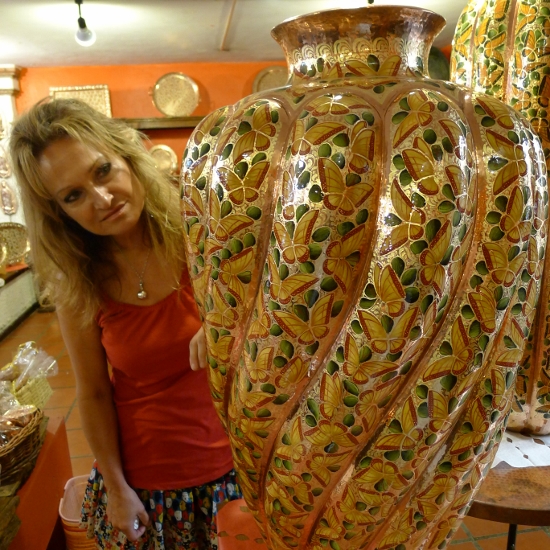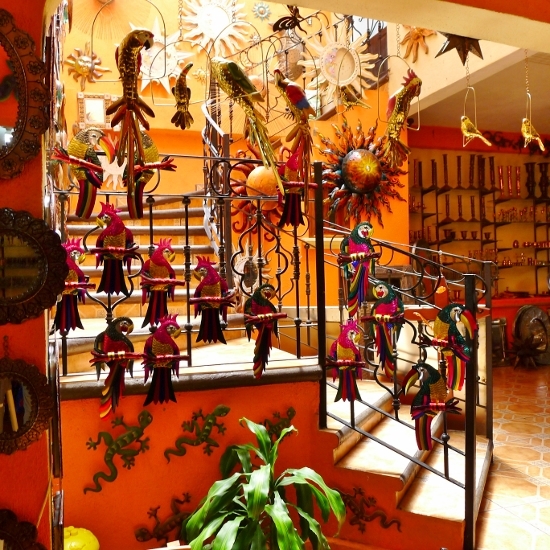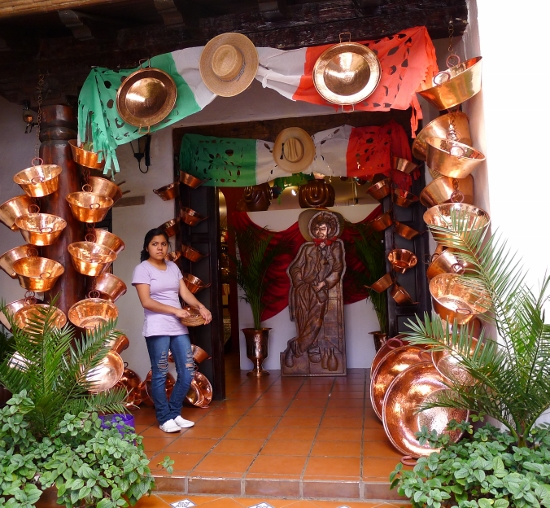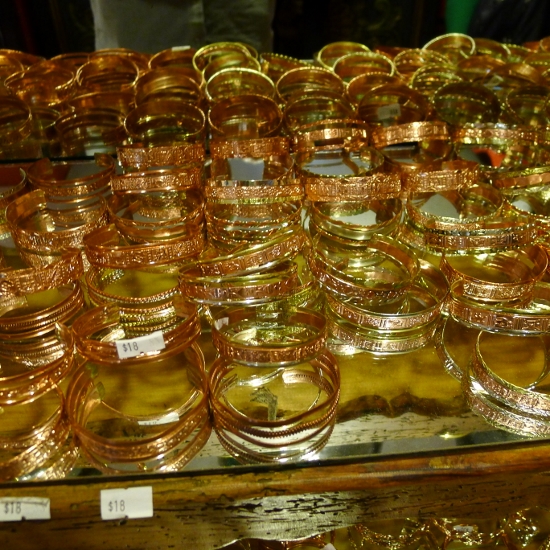
Today, truckloads of the shiny metal pour into Santa Clara, much of it sent by electric companies from around the country. Here, pieces of the scrapped metal are first melted down in foundries into pure copper ingots, typically the size of a loaf of bread. Particular articles are then pounded into shape by teams of sweating guys taking turns whacking the red-hot ingots with sledge hammers. A single item, perhaps a large bowl, might be fired, hammered and dunked in tubs of water a dozen or more times before it's finished.

Among hundreds of copper bargains on display at the shop, the sink sells for about $400 (it could easily go for $1,000 or more in the U.S.), a two-foot-high vase is priced at $250 and a frying pan at $14. At the upper end, a copper bathtub is a steal at $1,800.

"Coppersmithing at Santa Clara has been going on for centuries," says historian Jaime Capulli in Mexico City. "In pre-Hispanic times the native Purepechas were the tough kids on the block because this area was one of the few spots with the ore needed to make metal weapons."
Santa Clara del Cobre, named for St. Claire (the town's patron saint) and the Spanish word for copper, was founded in 1553. Its heritage, culture and colonial ambiance helped the city qualify as one of 57 pueblos magicos (magic cities) across Mexico.

Serious shoppers can opt to spend the night at a handful of tourist-class hotels around Santa Clara including the Camino Real and the Cabanas Mi Betania .
Visitors staying in Morelia have a choice of a dozen or so upscale boutique hotels, mostly in the city's colonial district, or at the award-winning Villa Montana on a hillside overlooking the town. Day-tours from Morelia stop at Santa Clara along with other small cities in the area such as the World Heritage site at Uruapan and another pueblos magicos at Patzcuaro.
Getting there: Besides nonstop flights to Moralia from Mexico City and other domestic airports, the terminal is served directly from U.S. hubs such as Dallas/Ft. Worth and Houston.
All images by Bob Schulman.

No comments:
Post a Comment